#takarazuka theater
Text
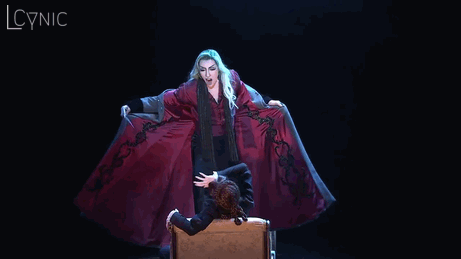


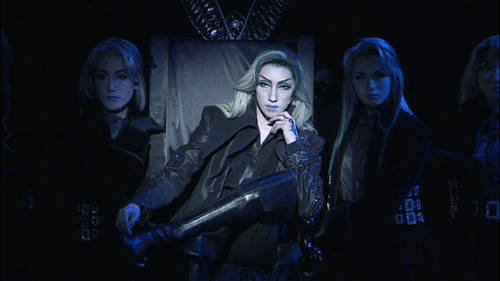
something LGBTQ happened to me during the 2007 Takarazuka production of Elisabeth
#what a day to be a dyke#takarazuka#takarazuka theater#takarazuka elisabeth#elisabeth the musical#takarazuka der tod#natsuki mizu#mizu natsuki#my post
335 notes
·
View notes
Photo
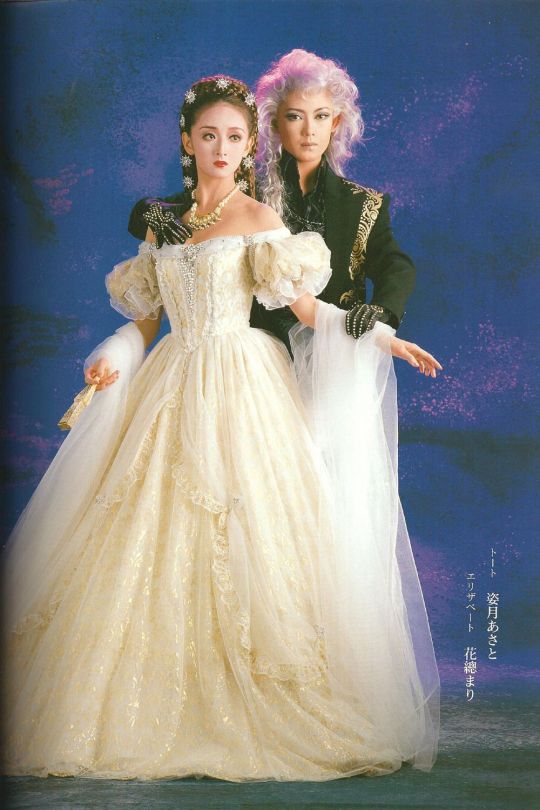

My mind when I was on Pinterest and seeing these: Sapphic Sandflower
#the sandman#dream of the endless#morpheus#nuala of the faerie#nuala sandman#takarazuka#takarazuka elizabeth#takarazuka theater
84 notes
·
View notes
Text

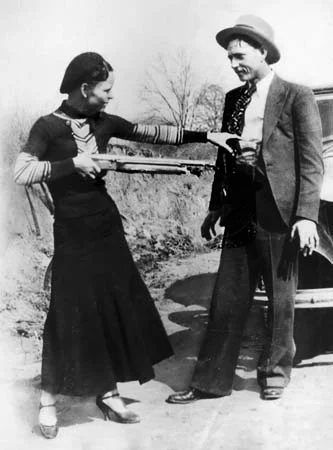

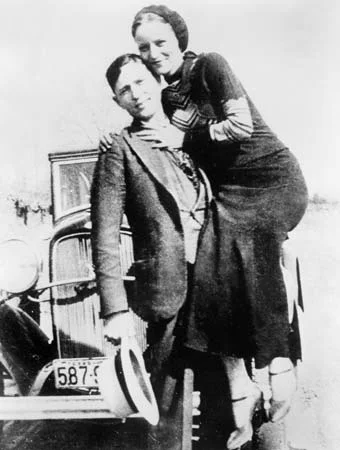
Ayakaze Sakina and Yumeshiro Aya reenacting real pictures of Bonnie and Clyde for the Snow Troupe musical performance programme.
#takarazuka#snow troupe#yumeshiro aya#ayakaze sakina#bonnie & clyde#bonnie and clyde#frank wildhorn#yukigumi#takarazuka revue#musical theatre#asian theater#my stuff#my scans#tkz scans
261 notes
·
View notes
Text
Touken Ranbu: The Contradictory Tale of Genji
Went in expecting fanservice and just a good time, left impressed.
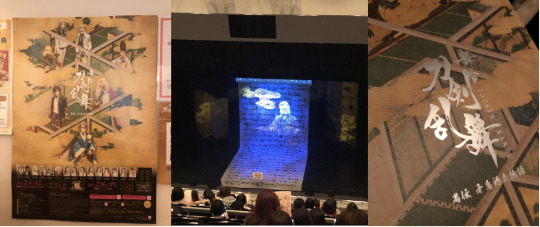
Part 1/3 - Plot:
The videogame source material has a very barebones plot because it knows what it is: a gatcha game for fujoshi to collect sword husbandos. Basically, something evil is trying to change (Japanese) history and make the universe implode. You, the player, are an onmyoji or priestess who is summoning famous swords like mad to save the world. The touken danshi themselves basically have the personalities of their famous historical figure owners or forgers coupled with quirks related to random facts and legends surrounding them. Some come with a Hachiko streak from losing their masters or their service in some darker parts of history. (only your love can heal them!). Classic gatcha game fare. In other words, there is a lot of room to be creative with this framework. Just look at all the sexy derivative works spawned from the thirsty fujoshi. This aspect of the fandom is surprisingly relevant to the plot of the musical. Stick around and find out.
Anyways, the plot of this specific show features a Tale of Genji crossover. The usual evil is messing with history again and a squad of swords are dispatched to fix it. The problem of the day is the entire Heian court has been isekai-ed into the novel Tale of Genji. The author Murasaki Shikibu and her fans have all gotten merged with the characters of the book. The Heian era swords are unavailable for vague reasons, leaving a bunch of young swords not forged in this era to untangle fact from fiction.
Thus, we start with team Kanesada finding themselves escorting a lady-in-waiting who explains that everyone around her has been suddenly larping Tale of Genji and she’s the only sane person left in court. They realize they are trapped in the book and reenact all the early chapters as they figure out how to undo the curse. Some of the more hot-tempered swords try to brute force their way out only to realize that book characters have protagonist halos to protect them from getting KOed. At the center of this vortex, the titular character Hikaru Genji is effectively an NPC who has gained sentience a la RE: Creators. We learn he functions similarly to the sword boys as the embodiment of the book. Not being a weapon, he can’t do much by way of fighting but he is unkillable and can act as dungeon master in his own story by transferring protagonist status to his victims. In other words, Genji can possess targets to simulate his story as a substitute while he dicks off. He uses this power to go OOC and try to retcon his own story. This is all quite convenient for him since he has a complicated relationship with his author. He is half reverential of her and half resentful. This culminates in Genji ultimately killing his own author. In the merged universe, Murasaki Shikibu and her readership have merged with the female leads of The Tale of Genji with Murasaki taking the role of the unobtainable Fujitsubo no Nyogo, Genji’s true love. In breaking the story with literal death of the author, all hell breaks loose with Genji going rogue.
As the touken danshi dig deeper, they learn the source of this chaos was a result of toxic fan culture! While many people enjoy Murasaki’s book and come away from it positively, a stalker fan voices his concerns that this is all vapid fiction with no value nor contribution to reality (the “wake up, loser” argument). They debate about the point of writing “fake” stories. While Murasaki understands the man’s point of view, she disagrees and refuses to put down her brush as this work is her passion. The man becomes so upset he is taken over by the evil powers to cause the time rift and alter history. His reasoning is if everyone is so obsessed with the book, they may as well live in it rather than face the real world.
Back in the present, the touken danshi are having a bad time resolving the timeline. They complain about needing grandpa Mikazuki’s help and keep getting possessed by Genji to reenact chapters while he escapes to cause trouble elsewhere. However, during the final boss battle with evil Genji, the isekai-ed fangirls come to the rescue! As they reminisce about their love of the novel (well, it would be equivalent of a serialized magazine at time of publication) and how it was therapeutic or inspiring for their real lives, they begin to return to themselves. Now it’s important to note that Murasaki’s contemporaries did write derivative works or helped her transcribe chapters to share. Therefore, these fangirls are effectively ancient Japanese fanfiction authors and thus have power to end Genji as much as the original author does. But they love him as a character too much so are unable to strike the finishing blow and basically toss the responsibility to young Murasaki, Genji’s second wife who he had kidnapped as a child to groom into the perfect woman. Unable to bear the suffering and moved by the women in his life both as characters and as his fans, Genji lowers his protagonist’s halo and accepts death. The touken danshi are able to finally fix history and complete their mission. When they return to modern day, they hear news that archeologists have found physical evidence that Genji existed as a historical figure and thus a conspiracy theory is born! The touken danshi take this information with mixed emotions.
What an amazing story. The theme was deep without being too obtuse. The climax got meta and opened a lot of discussion about the value of fiction, derivative works, the dangers of escapism, censorship, and even spirituality. Definitely worth a second viewing to digest all this.
There was a mini-revue number in the end where the cast performed an umbrella dance to anachronistic Touken Ranbu music. Then the cast descended a staircase in parade order for final bows. It was a much-needed break from the heavy and complicated plot. It was also a small nod to the main cast’s Takarazuka roots or hina doll staging, which is a common set design when using Heian costume. The umbrella dance reminded me of the finale Sakura dance OSK does at the end of their performances. Perhaps this is a proud Osaka tradition. I haven’t seen a different Touken Ranbu show (yet) so I don’t know if this is a part of the brand.
#touken ranbu#tale of genji#takarazuka og#og lyfe#my thoughts#my meta#my rambles#my ramblings#otokoyaku#theatre#theater#touken ranbu musical#刀剣乱舞#宝塚#宝塚OG#nanami hiroki#seto kazuya#kai#akira#ayanagi sho
41 notes
·
View notes
Text

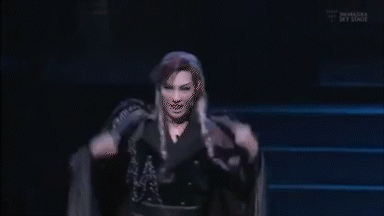


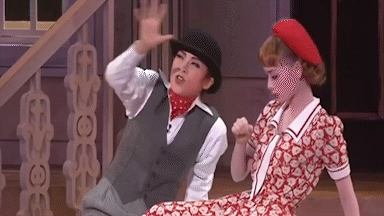

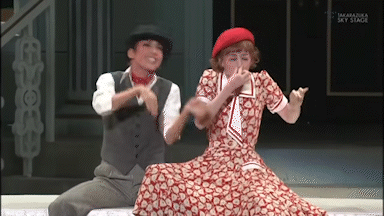

Asumi Rio
Shinjin Kouen vs Honkouen
Elisabeth (2009) - Elisabeth (2014)
Me and My Girl (2008) - Me and My Girl (2016)
#asumi rio#rio asumi#takarazuka revue#明日海りお#takarazuka#mirio#宝塚#宝塚歌劇団#me and my girl#elisabeth#der tod#musical#theater#broadway#musical theater#my gifs
79 notes
·
View notes
Text

Takarazuka version of the classic film Roman Holiday
11 notes
·
View notes
Text

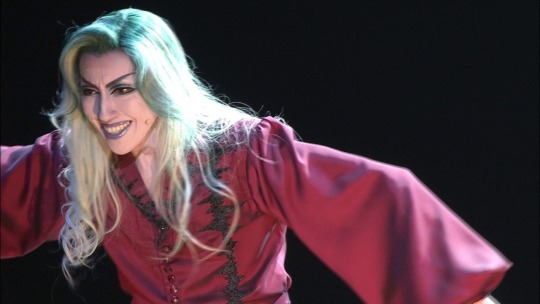


Happy Pride Month yall im in lesbians with her
#natsuki mizu#Takarazuka#takarazuka elizabeth#takarazuka theater#HEY DEATH GIVE ME A CHANGE ILL KISS YOU ILL DO IT IM GAY IM BEGGING ON MY KNEES MAAM#my post#HER WHOLE VIBE GIVES OFF LESBIAN JARETH I WANT HER
51 notes
·
View notes
Text
Miya Rurika singing 私は神だ Je suis un dieu / Le cauchemar on Moon Troupe's performance of 1789: The Lovers of the Bastille (2015)
#takarazuka#1789 les amants de la bastille#1789 the lovers of the bastille#miya rurika#takarazuka revue#moon troupe#tsukigumi#asian theater#french musicals#dove attia#my stuff#missing miya hours...
188 notes
·
View notes
Photo



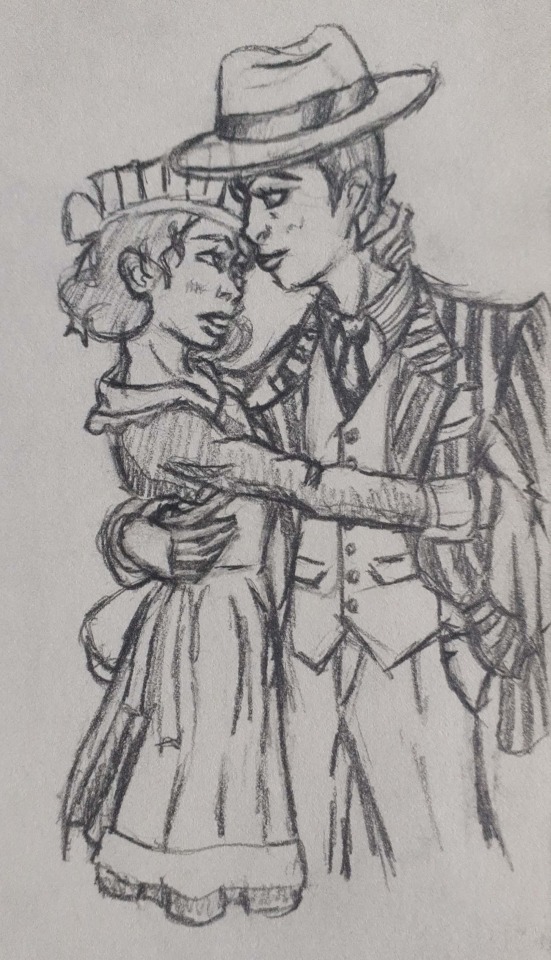


Nice Work Quick Sketches!!! Yea, I said i’d drew more ReiHana 💖 Now I want more-
#takarazuka revue#takarazuka#Nice work if you can get it#naiwa#yuzuka rei#hana yuuki#reihana#hanagumi#sketch#Billie Benedix#Jimmy Winter#I really love that cute moment on the couch after S'Wonderful#Hana Shoulder Seduction to Rei moment#That cuddle pose where they had to pretend to Chief Berry that they're still in their honeymoon KILLS ME#I NEED MORE OF THAT#Continues to dump in tumblr ikr#Theater#marriage
17 notes
·
View notes
Text
Takarazuka Revue is so funny because it’s like we are a fine upstanding institution of good family values, like homophobia. Please ignore the lesbians making up the majority of people both on stage and in the audience.
Takarazuka Revue is like: we enforce only the strictest gender roles in our troupe as is right and proper, sorting them into the two genders: women who are women, and women who are men. How dare you suggest there’s anything queer about that.
Takarazuka Revue is simultaneously the queerest thing and the least queer thing to ever exist. Takarazuka bucks tradition and is tradition incarnate. Takarazuka is like
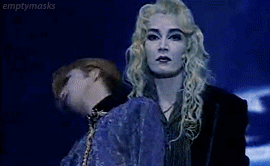



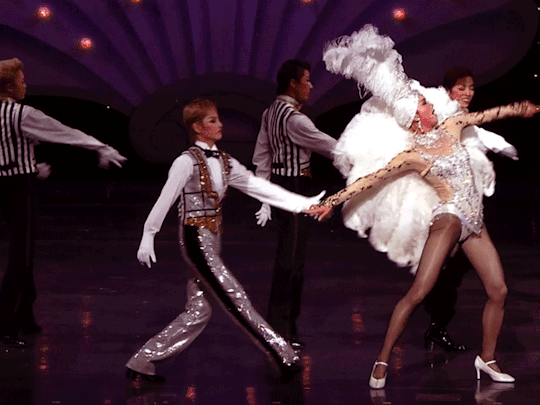
and then is like, “no homo”
and maintains itself as one of the most hierarchical artistic organizations in the world with intense control over its performers. This alternate reality where the talented (and lucky, and connected) few can gain the right to openly perform queerness in the one setting comphet capitalism has carved out for them as long as they follow a different even stricter set of rules for dress and behavior. It dissembles traditional gender by its very existence and so must reinforce it at every turn.
And yet despite being the product of a conservative capitalist railroad owner who only really sought to exploit women for entertainment aimed at men (and their hetero families) that remains loyal to those deeply normative puritanical roots, it was and is also one of the most liberating theater and media experiences of queer Japanese people for decades. You can tell from all the queer art about it, by queer people. By the fact that the audience who flocked to it were not (cis) men.
Trying to untangle the mutual influence of shoujo manga to takarazuka is even more difficult that trying to untangle something like the history of modern Broadway and Disney movies. We wouldn’t have The Little Mermaid without Little Shop of Horrors, but we wouldn’t have Wicked without the Disney renaissance, but we wouldn’t have Frozen without Wicked, and going back further to things like Cinderella and Rogers and Hammerstein and they are intertwined but listen to me. Takarazuka and shoujo manga, especially yuri, are more intertwined. And then so much western media has been inspired by shoujo anime. Rose of Versailles the manga was inspired by Takarazuka and then in turn was adapted into their most famous play which then in turn influenced so many more artworks. Uranus and Neptune are an otokoyaku and musumeyaku. Utena and Anthy (and honestly that whole ass show. The stairs?? C’mon). And all the works and creators THOSE works inspired.
We owe so much to Takarazuka but also if we tried to thank them for their role in queer history they’d be like “we’ve never been queer in our lives!!!!!!!!” and then say a slur to your face while taking your money. Incredible. Wish more people knew what the fuck it was and I could get fansubs.
6K notes
·
View notes
Text
Touken Ranbu: The Contradictory Tale of Genji
Part 3/3 - Overall Impressions:
On a technical level, the show is quality. The main cast sang melodiously and music composition was suitable to the time period and mood of the show. There was not so much dancing to judge but acting was superb. Many actors had to play double roles such as anyone possessed by Genji or anyone on the Genji side of the plot. The contrast was evident and well-done. The child actor was very professional and I had no issue with her when I’m usually not impressed. That was a pleasant surprise. Set design was minimalist, which made for some creative setups but there were enough hints for the audience to suspend disbelief and jog their imagination. The transitions were incredibly fast and most of it was done using a giant cloth sheet that represented a page of the novel that was waved about.
Of course, I loved the costumes. Combined with the actors, they effectively brought the characters to life. Ladies and lead role Nanami Hiroki got the best picks. Akira got an epic evil costume in the end to represent Genji going rogue. It was a chaotic costume by design with mostly Japanese silhouette but what’s with the Chinese style double skirt, armor design, and hairdo? (jkjk lol) I suppose turning evil turns you into a jumbled mess of modern art. The real moral here is treat your fictional world with care or risk it biting you back.
Now this is a sword show so naturally the fight choreography was incredibly smooth and stylistic while being cleanly executed. Genji is no swordsman but a scholarly prince so his weapon was a fan that Akira wielded gracefully and skillfully in her fast-paced battles. In fact, there was a lot of fan twirling and all done to perfection. My praise is for the effortless ease actors were wielding fans. I would expect them not to drop them as part of the job.
The overarching theme concerning the value of fiction was compelling. When the creeper fan confronts Murasaki and later curses all of Kyoto, the five precepts of Buddhism is referenced. Among these precepts is the prohibition against speaking lies or falsehoods, which encompasses anything ranging from thoughtless remarks to “great fictions.” The fan praises the book but is worried that spreading of such an influential fictional work will result in leading people astray and thus Murasaki would be punished in the afterlife for her sins. In fact, in medieval history a memorial service was held to rescue Murasaki’s spirit from Buddhist hell over this very matter. One can take the traditional Buddhist interpretation of life being hell because life is suffering and impose it over the musical. Therefore, the isekai is a type of trial. Just as the Empress and other readers of The Tale of Genji are grappling with their reality through the novel, they are reliving the parts of the book they resonate with to find a solution to the problem in their lives. An even darker interpretation is the ghosts of Heian-kyo are in purgatory by living in the fiction they became consumed with instead of being present in society. During Murasaki’s time, the upper echelons of society were obsessed with the Cult of Beauty at the cost of governance and economy so was quite corrupt and detached from reality. What more fitting punishment in the afterlife than eternity in their vapid world? Perhaps the touken danshi stumbled upon such a purgatory.
There is also more contemporary views of fiction in this play. Murasaki pushes back in the debate by respecting the intelligence of her fans and expressing the love she has for her writing and its very real value to herself. Furthermore, her avid readership stand in solidarity by citing the novel’s beauty and meaning to their lives either as escapism or example. Here we see more modern values on display with fiction enriching and enhancing reality or supporting readers through their struggles and triumphs. One can also glean commentary about parasocial relationships as well with Murasaki’s interactions with her fanbase and the fans’ earnest love of a fictional character. In short, this is a story about the influence and impact of stories on people and how wonderfully weird and beautiful that relationship is.
The story I enjoyed a lot. Many videogame and anime musicals are shallow cash-grabs but this one went out to tell a meaningful story. I respect that. I’m even tempted to buy the DVD lol. Not like there’s any merch left anyways. All that sold out before the curtains even rose.
#takarazuka og#og lyfe#takarazuka#nanami hiroki#kai#seto kazuya#akira#ayanagi shou#otokoyaku#theatre#theater#touken ranbu#touken ranbu musical#my meta#my rambles#my ramblings#my thoughts#genji monogatari#tale of genji#宝塚OG#宝塚#源氏物語#刀剣乱舞#七海ひろき#瀬戸かずや
15 notes
·
View notes
Text
Transmasculinity and queer sexuality in the works of Ikeda Riyoko
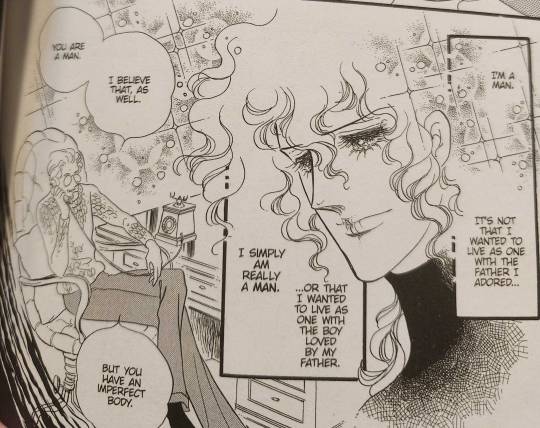
Content Warning: Discussion of transphobia and suicide
Spoilers for Dear Brother, The Rose of Versailles, and Claudine
Ikeda Riyoko—perhaps the most famous member of the “year 24 group” that played a large part in creating the foundations of the shoujo manga genre—is often credited with laying the groundwork for depictions of queer characters in shoujo, and in particular with creating the archetype of the gender-bending heartthrob heroine, or “girl prince.” Building on earlier representations of butch or transmasculine characters in early shoujo manga such as Princess Knight, and the Takarazuka theater tradition of the otokoyaku male role actor, Ikeda’s enormously popular gender non-conforming heroes—Lady Oscar from The Rose of Versailles, Rei from Dear Brother, Julius from the Window of Orpheus, and the titular character of Claudine—helped to establish that there was a major mainstream audience excited to cheer for a hotheaded, androgynous tomboy with a heart of gold. Lady Oscar in particular has fingerprints all over the history of anime and manga, from a gender-bending cameo in Pokémon to serving as the inspiration for iconic characters like Tenjou Utena.
When I first read The Rose of Versailles last year, I expected its depictions of queer and transmasculine characters to be somewhat limited—after all, the comic was written for mainstream audiences and a mainstream publisher in the 1970s. But across Ikeda’s work, I was deeply surprised with the level of care and nuance with which Ikeda approaches transmasculine love stories. While there is obviously a lot about Ikeda’s portrayal of transmasculine characters that feels dated to modern audiences (for example, her comics often do fall back on “biological” ideas of women’s weakness and emotionality, and sometimes psychologize her character’s genders in uncomfortable ways), I was surprised by how much of these comics still hit for me today. What makes them work for me is both the extreme pathos with which Ikeda writes transmasculine character’s experiences of rejection—and, at rare moments, gender euphoria —but also the fact that her trans characters are not simply given a one-size fits all born-in-the-wrong-body narrative. Instead, they are each portrayed as unique individuals with varied personal relationships to their gender, their sexuality, and the historical context of the society they live in.
Read it at Anime Feminist!
#riyoko ikeda#ryoko ikeda#rose of versailles#berubara#versailles no bara#lady oscar#dear brother#oniisama e#claudine#classic shoujo#shoujo#articles#asuka rei
403 notes
·
View notes
Text
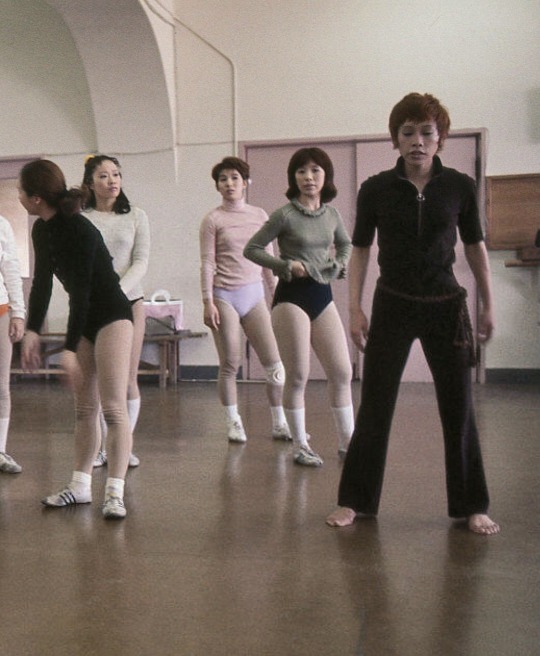

“A group of girls from the Takarazuka womens theater rehearse in the gym for a show in honor of visitors to the Expo '70. Osaka, Japan, March 1970.”
Photographed by Mario De Biasi.
345 notes
·
View notes
Text

All Female Takarazuka Revue RRRxTakarazuka Bheem Musical & Revue Syndrome Violetopia Poster
2024/01/01 ~ 02/04 @ Takarazuka Grand Theater
2024/2/23 ~ 04/06 @ Tokyo Grand Theater
Starring: Rei Makoto , Maisora Hitomi , Akatsuki Chisei , & featuring Star Troupe members
#takarazuka#takarazuka revue#star troupe#hoshigumi#rei makoto#maisora hitomi#akatsuki chisei#bheem rrr#rrr fandom#rrr#komaram bheem#ss rajamouli#japan#telugu cinema
165 notes
·
View notes
Text
Limited time episode 1 is released.
youtube
To all of you.
Shingidan Mumei Classics is a theater company that is not famous even in Japan.
It's not as well known as Takarazuka Revue Company or Shiki Theater Company.
There are less than 10 members of the theater company.
I am also a freelance actor, not a theater member.
Please receive ep.1, created solely with the love of Umineko by the host Masami Ito.
If you have comics translated into English, please take a look at them as well.
I think the overall structure is similar to comics.
#Youtube#umineko#umineko no naku koro ni#when they cry#stage play#umineko when they cry#stage of the golden witch#うみねこのなく頃に#うみねこ#うみステ2#うみステ
228 notes
·
View notes
Text
Something I can't stand about this whole gender -fever or whataver is how it's cancelling/absorbing butch lesbian representation. I had been bullied my whole adolescence because of my appearance (tall and androgynous) and behaviour, I didn't have role models, mostly because many lesbian media were censored in the country in which I grew up and my family, because it belongs to a different culture, was a very conservative and traditional ones. Sometimes ago my mom told me she didn't even know homosexual people existed before moving from Albania. Growing up wasn't easy, I remember asking myself what was wrong with me and why I was a woman since everything would have been easier if I were born as a boy. That's why masc-butch representation is so dear to me and I'm angry about reinforcing gender stereotypes by saying that if you feel different from other girls you're probably not one. That's why I love Naoko Takeuchi, Creator of Sailor Moon, for stating that Haruka Tenoh (Sailor Uranus) is a girl

I love this mainly because western people want to portray her as non-binary/gender fluid or whatever just because she's very "masculine" (and also because of a manga panel, but I'll get there), I'm talking about her looking and hobbies. First of all... Androgynous women exists in real life, secondly there is no thing such as mainly hobbies but, yeah, I think I'll leave it for another post. Most people also ignore the fact that Haruka and Michiru were hugely based on Takarazuka Revue, since Takeuchi is a huge fan of it, In The Materials Collection, published in 1999, Takeuchi also revealed Haruka and Michiru were inspired by two actresses in particular but she didn't want to share their names.
What's Takarazuka review? Takarazuka Revue is a Japanese all-female musical theater that was founded in 1913. as an all-female troupe in order to attract a wider audience and fill a gap in the male-dominated theater scene. There are two kinds of actress in their plays: musumeyaku and otokoyaku. Musumeyaku are the ones who play feminine roles, while otokoyaku play the masculine ones. In order to become an otokoyaku you must have certain qualities, such as being tall. Haruka is 5'10" (180cm) and described as androgynous and act "manly". That's why Usagi and Minako when they met her they thought she was a man. Otoyaku, while training, also need to study how to "behave like a man", this comes from an article published in the late 90s:

As I said otoyaku, the majority of them at least, only play male roles, and as we said Takarazuka was born to fight a male-dominated scene. However, there's more, in the same article they spoke of otokoyaku's appeal on female audience:

Furthermore, this is what a former otokoyaku said about what being a otokoyaku really means:
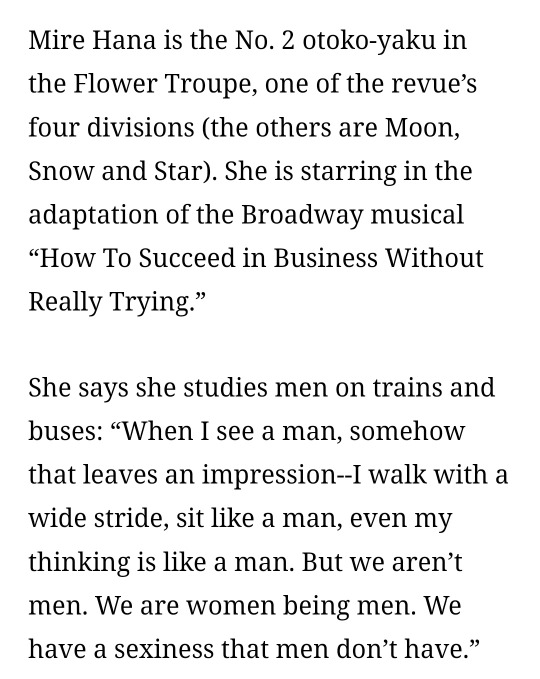
Otokoyaku are the idealization of men played by women who knows what other women want!! Since Haruka character is mostly based on this idealization, this is what Takeuchi meant when in the manga she had michiru saying Haruka is "both a man and a woman", I hate seeing how this phrase is used as a gotcha by gendies when they don't even consider the social and cultural contest behind a certain media.
#radfem#radblr#radical feminism#gender critical#radfems please interact#radfem safe#radfems do interact#radical feminst#lesbian#sailor moon I guess as well#terfblr
629 notes
·
View notes